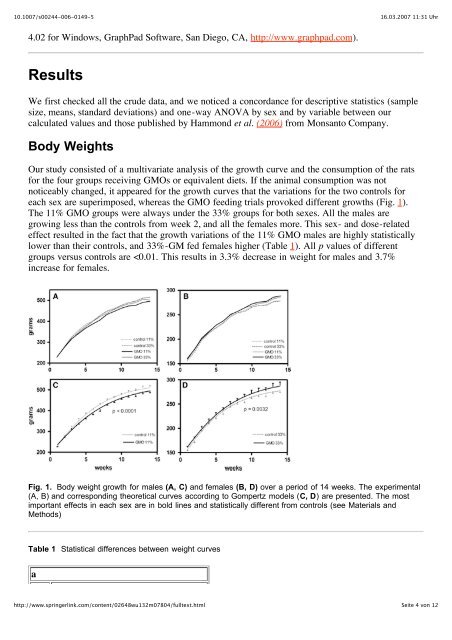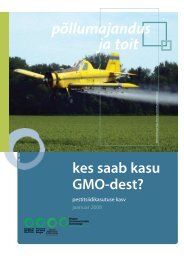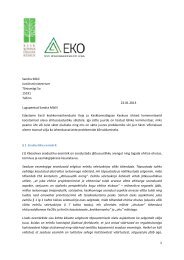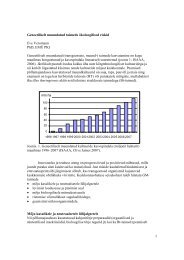New Analysis of a Rat Feeding Study with a Genetically Modified ...
New Analysis of a Rat Feeding Study with a Genetically Modified ...
New Analysis of a Rat Feeding Study with a Genetically Modified ...
Create successful ePaper yourself
Turn your PDF publications into a flip-book with our unique Google optimized e-Paper software.
10.1007/s00244-006-0149-5<br />
16.03.2007 11:31 Uhr<br />
4.02 for Windows, GraphPad S<strong>of</strong>tware, San Diego, CA, http://www.graphpad.com).<br />
Results<br />
We first checked all the crude data, and we noticed a concordance for descriptive statistics (sample<br />
size, means, standard deviations) and one-way ANOVA by sex and by variable between our<br />
calculated values and those published by Hammond et al. (2006) from Monsanto Company.<br />
Body Weights<br />
Our study consisted <strong>of</strong> a multivariate analysis <strong>of</strong> the growth curve and the consumption <strong>of</strong> the rats<br />
for the four groups receiving GMOs or equivalent diets. If the animal consumption was not<br />
noticeably changed, it appeared for the growth curves that the variations for the two controls for<br />
each sex are superimposed, whereas the GMO feeding trials provoked different growths (Fig. 1).<br />
The 11% GMO groups were always under the 33% groups for both sexes. All the males are<br />
growing less than the controls from week 2, and all the females more. This sex- and dose-related<br />
effect resulted in the fact that the growth variations <strong>of</strong> the 11% GMO males are highly statistically<br />
lower than their controls, and 33%-GM fed females higher (Table 1). All p values <strong>of</strong> different<br />
groups versus controls are






